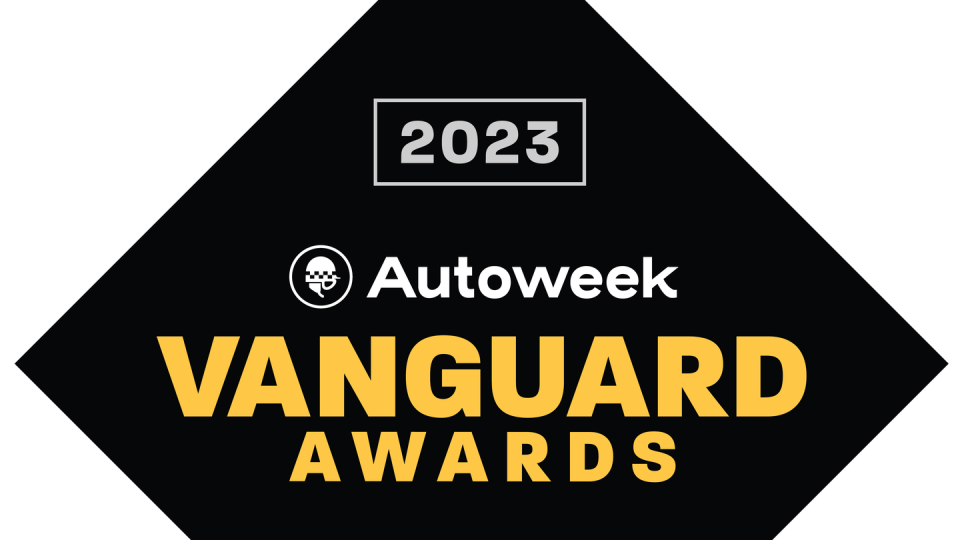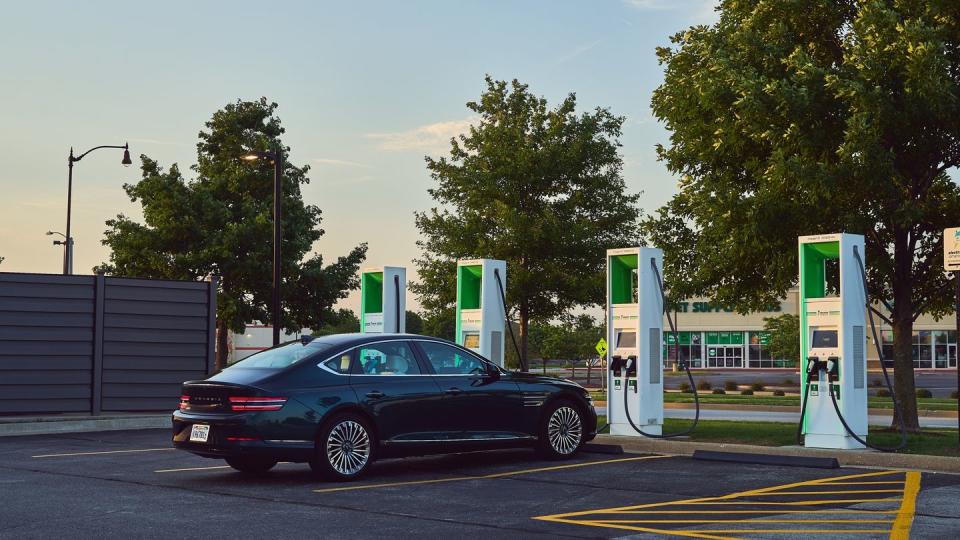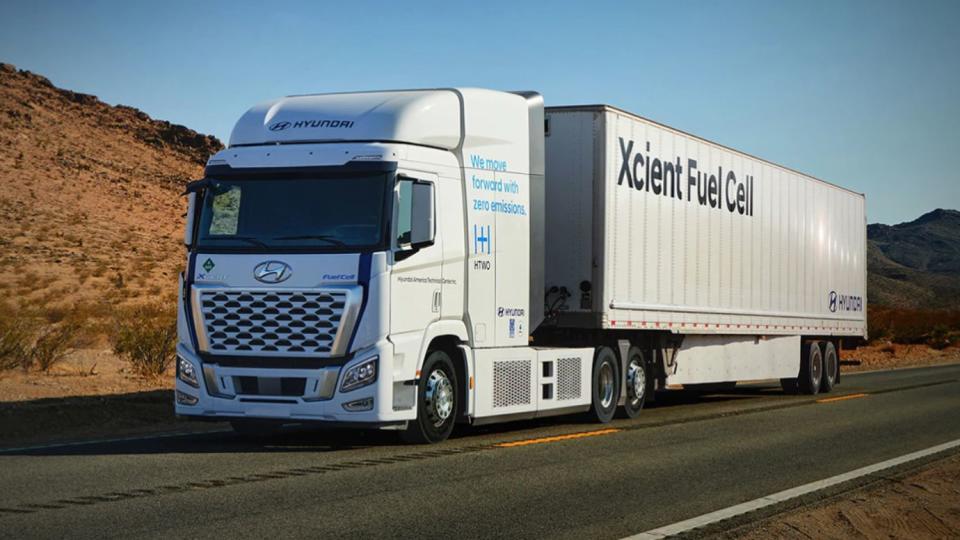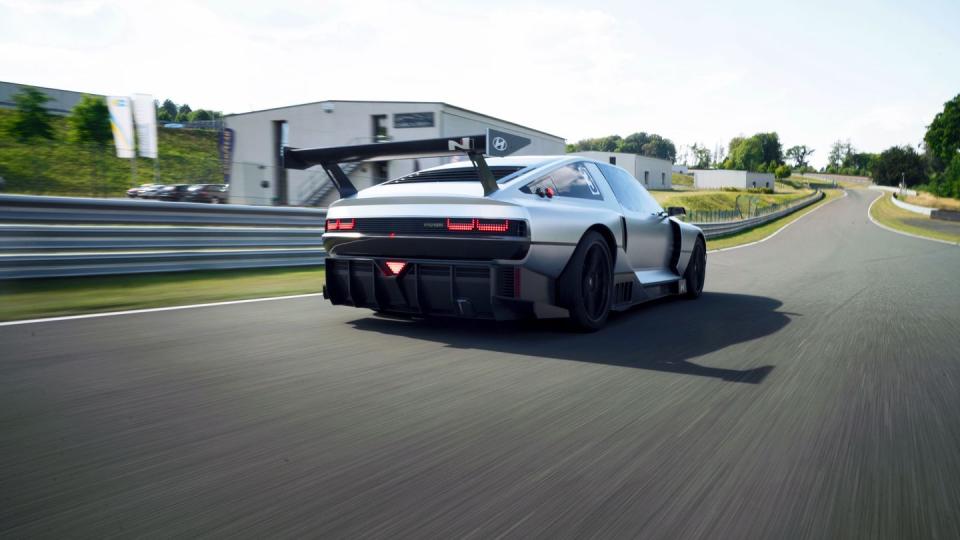Here's the Winner of Autoweek's 2023 Vanguard Award, Company

Hyundai Motor Company has demonstrated a steadfast commitment not only to developing vehicles that will reduce our dependence on fossil fuels, but also to make sure those cars are engaging, beautifully designed, and accessible to a wide swath of buyers.
From cars like the Hyundai Kona Electric and models from sub-brand Ioniq, to the luxury offerings from Genesis like the GV60 and Electrified GV70, and extending to corporate subsidiary Kia’s EVs, including its award-winning EV6, the Korean automaker is making a clear statement about what it feels is its responsibility to envision—and realize—the car of our near future.
That future car, that one sitting in your driveway in just a few years, will be electric, and it will be fun to drive.

Hyundai has pledged to achieve net-zero carbon emissions by 2045. And while many other automakers have made similar declarations, varying in degree, perhaps, or timeline, where Hyundai separates itself in how quickly it’s making the transition.
And it’s doing so across its entire portfolio—without waiting for a one-platform-for-all strategy to do so, though that is coming.
A $34,885 Kona Electric, for example, will take you 285 miles between charges, almost identical to the top-of-the-line Genesis Electrified G80, which starts at $80,950.
A new Integrated Modular Architecture (IMA) is already set to replace the Electric-Global Modular Platform (E-GMP) currently underpinning most of the automaker’s electric offerings, and “will be used on 13 new dedicated EV models from Hyundai Motor Group’s automotive brands Hyundai, Kia, and Genesis through 2030,” the automaker says.

Hyundai Motor says IMA will entail “nearly all vehicle classes, ranging from small and large SUVs to pickup trucks, along with the flagship models of the Genesis brand.” Power will come from both next-generation nickel-cobalt manganese batteries and lithium-ion phosphate batteries.
That’s not to say the future as Hyundai sees it won’t also be hydrogen-powered.
And yet where other automakers are taking a more wait-and-see approach, hedging their bets against going all-in on any one electrification strategy, Hyunding is committing to both.
“We are happy to deploy our XCIENT Fuel-Cell trucks in California, especially since this will help local stakeholders to decarbonize the hydrogen supply chain itself by substituting conventional trucks—which have been used to haul hydrogen—to hydrogen trucks,” said Mark Freymueller, senior vice president and head of Commercial Vehicle Business Innovation of Hyundai Motor.

At the other end of the hydrogen fuel-cell spectrum, the retro-futuristic Hyundai N Vision 74 prototype also drew power from such a powertrain setup, and when it was announced the company would build a limited number of production versions, the only thing for certain is they’ll be electric.
“EV is not an interim technology, it will stay out there. It is clear that for cars, EV is hard to beat,” Albert Biermann, formerly the group’s R&D boss, told us last year. “But my line of thinking is easy: If we want the world to go carbon neutral, we will need millions of tons of hydrogen in all aspects of society. And if you do that, it is then no big deal to put that into cars or trucks or buses.

“What is the best synergy to grid power? Hydrogen, that’s clear,” he adds. “You can store it, you can use it when you need it, you can take it everywhere. It’s like milk and cheese, milk is like power from the grid—you use it, or it goes off. Hydrogen is like cheese—stored energy that lasts. It will be part of the future, that is unavoidable.”
More important, the Hyundai Motor Company is working on ways to develop “clean hydrogen,” produced using solar and wind energy rather than the more common method, steam methane reforming, which produces carbon emissions.

 Yahoo Autos
Yahoo Autos 